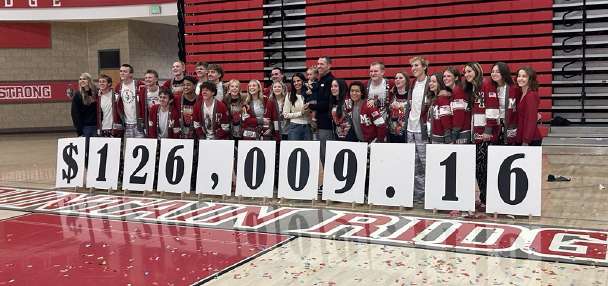Estimated read time: 3-4 minutes
This archived news story is available only for your personal, non-commercial use. Information in the story may be outdated or superseded by additional information. Reading or replaying the story in its archived form does not constitute a republication of the story.
SALT LAKE CITY — Nearly a million Utahns are expected to find themselves in under a desk, table or other form of cover, riding out a mock earthquake Tuesday morning. It's called the Great Utah ShakeOut, a drill that state officials hope will save lives when the real deal hits.
Emergency officials have said that outside of Woodward, early tornado warnings saved lives. Utah emergency personnel hope a little preparation for a potential massive earthquake will get people thinking about how they would survive a natural disaster here.
So what can Utahns expect during the ShakeOut?
"You may see the National Guard mobilizing into Sugarhouse Park, and Herriman and West Valley, and Sandy," said Joe Dougherty with the Utah Division of Emergency Management. "You may see some fire trucks."
Thousands of Utah employees, students and civil servants will drop everything at exactly 10:15 a.m. to take cover. They'll also follow up on other details, such as planning for a company sleepover if every body's stuck at work. Or contacting loved ones.
"We're encouraging people to call their out-of-state or out-of-area relatives, as you would in any sort of incident to make sure they know that you're OK," said William Harry, executive director of the Valley Emergency Communications Center.
900,000 Utahns plan to participate in Tuesday's ShakeOut. With that many people, communication is crucial. At the Valley Emergency Communications Center, dispatchers will test their ability to keep the lines open under added stress.
Authorities hope the drill will make a catastrophic event much less stressful. They want people to know exactly what to do when the earth shakes.
"The main goal here is that people are getting more prepared," Dougherty said. "We have an earthquake threat in Utah and we just had a 4.3 earthquake last week in Garfield county. Those little reminders tells us Utah is earthquake country."
Those participating are supposed to stay under cover for more than a minute after the shaking ends.
What's the drill and what's real?
The whole point of the exercise is to make it as much like a real-life situation as possible. UDEM has asked any organization participating in the drill to put up signs that indicate they're participating in the Great Utah ShakeOut.
Some of the behavior you'll see will just seem odd.
"We've invited the entire state all two point eight million utahns to drop cover and hold on for one minute," Dougherty said.
Some cities and counties will sound an alarm. And then there's entire offices emptying out into the streets and nightmarish scenes like simulated dead and injured people as well as dozens of emergency crews.
One place people should expect to see a lot of activity tomorrow is at hospitals and clinics throughout the state. More than 100 medical facilities plan to participate in the drill, with some staging full-scale exercises that involve a lot of emergency vehicles, a lot of mock patients, and a lot of fake blood.
But it's all fake.
"It's important to remember that if you see emergency activities happening, it's a drill." Dougherty said. "We don't want the public to be alarmed by this. It's a time for all of us as government to practice our response as well."
Of course it's impossible to really put yourself in a disaster scenario, especially when you're an emergency dispatcher and lives depend on your work.
"It's very difficult to tax a communications system in an exercise scenario because we do have a real-world issue, and if something does happen then the exercise play does go to the side," Harry said.
Harry also said the dispatch center will function at full capacity, just like any other day. The whole point of the drill is to save lives, and the state hopes to bring Utahns together in that effort. They'd also love for you to share pictures and stories of how you survived the Great ShakeOut.
"They can submit those to share exactly how their drills went for them and what they learned. That's what this is, it's a learning experience for all of us," Dougherty said.









